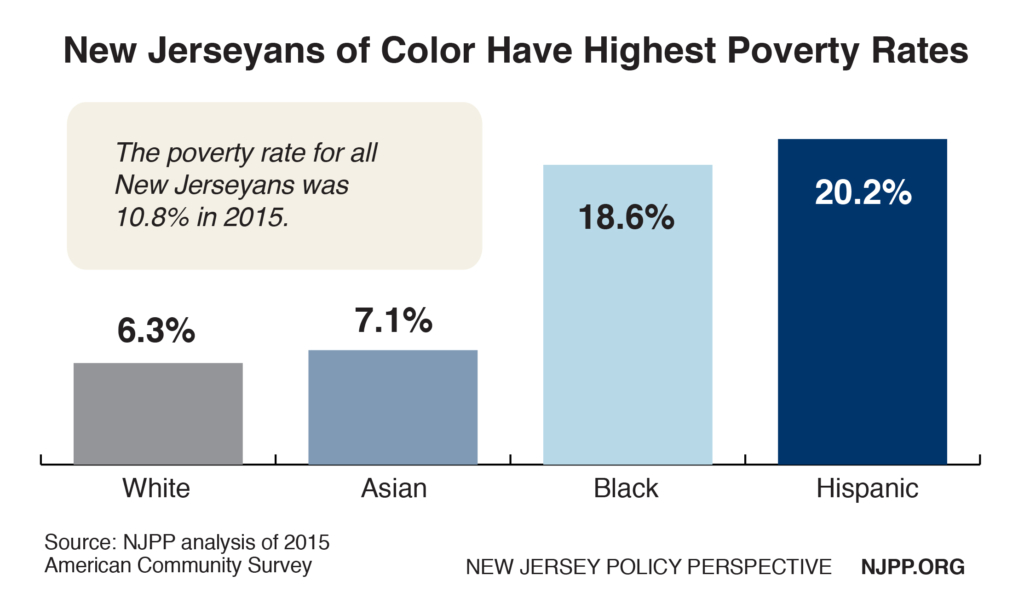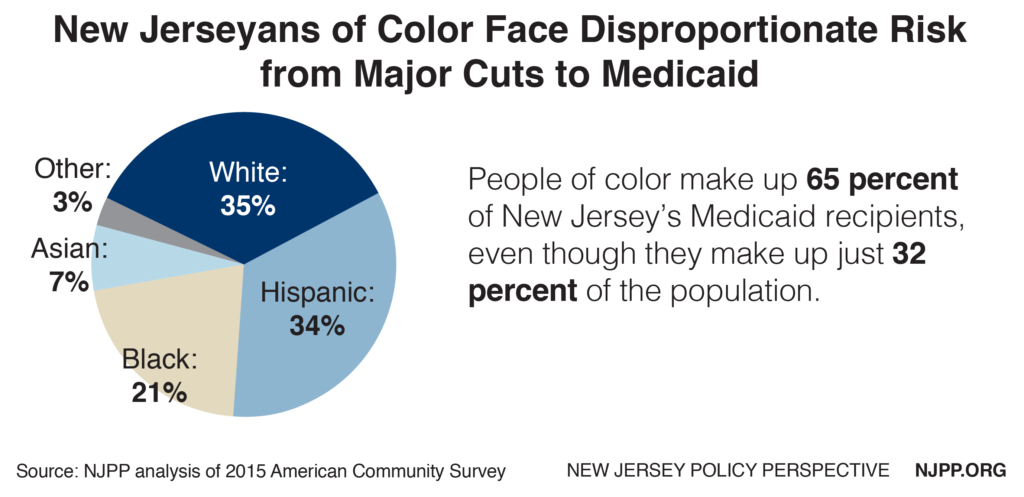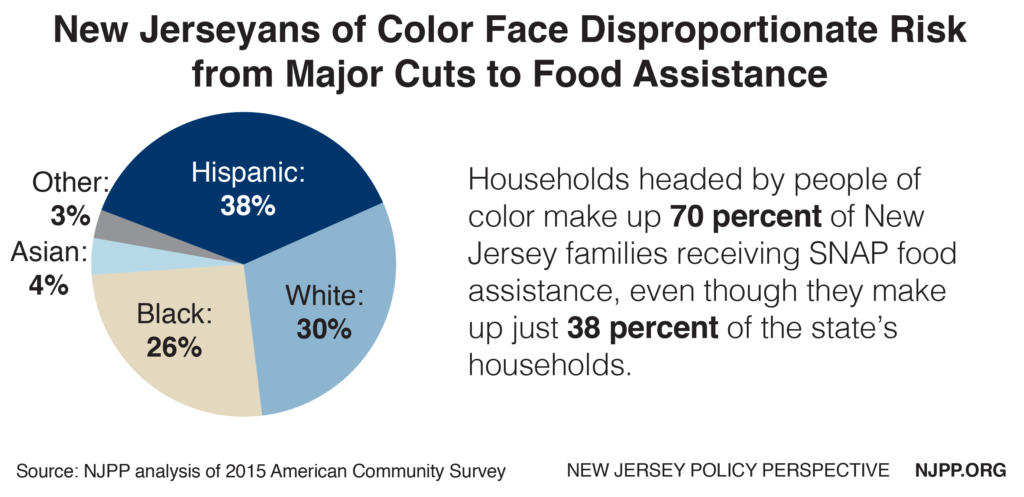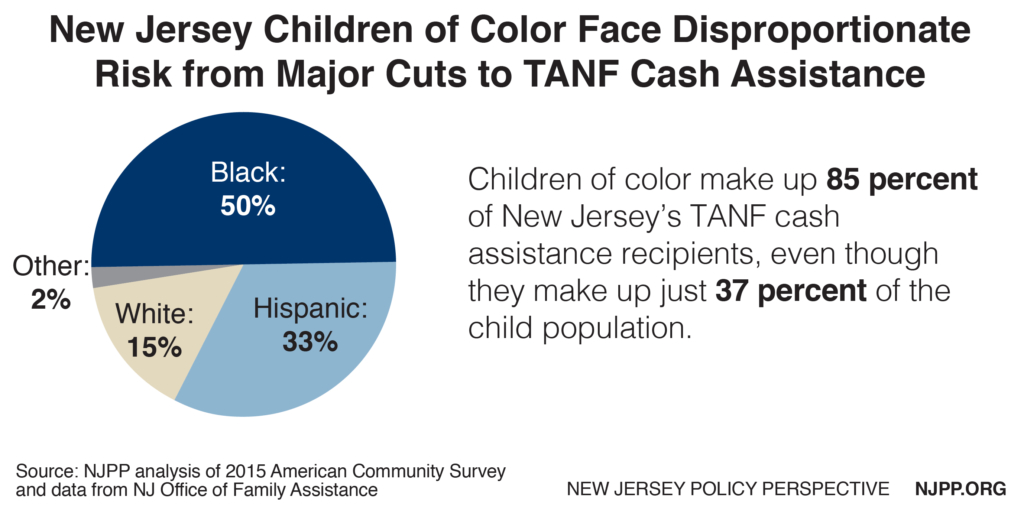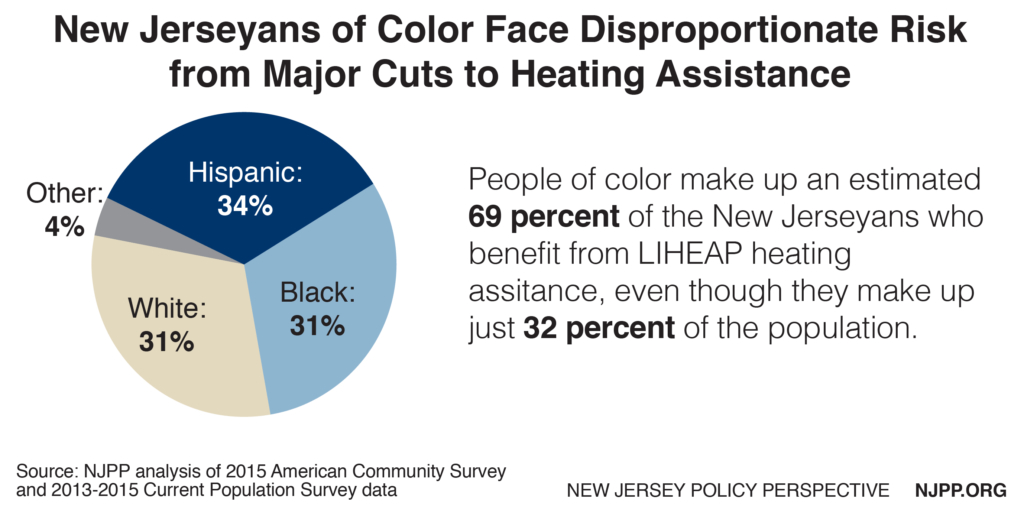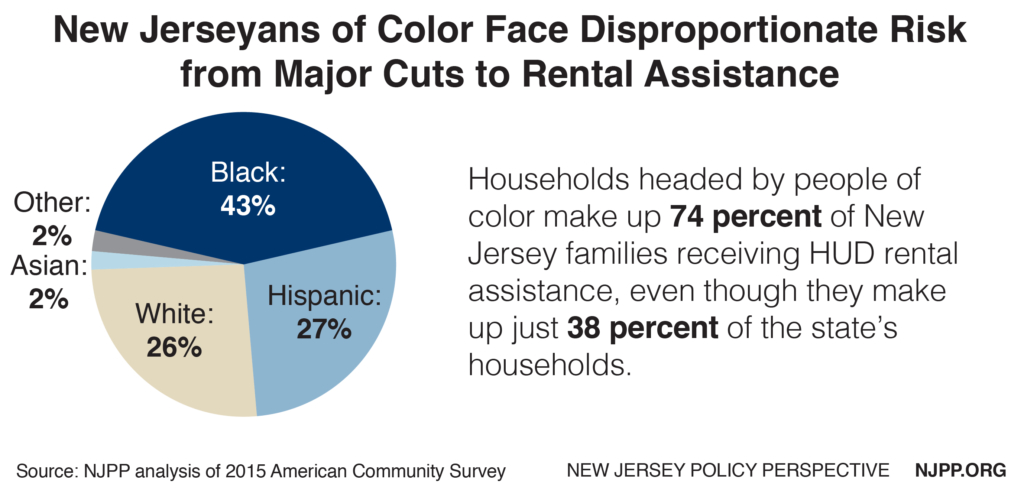To read a PDF version of this report, click here.
The spending plan unveiled last week by President Trump would cause great harm to New Jersey, damaging the state’s low-income and working-class families the most. Deep cuts to health care, food assistance, aid for the disabled and more are paired with massive tax cuts for the wealthiest Americans, which will cause the widening gap between those doing very well and the rest of us to grow.
The proposal, which is also built on highly unrealistic growth projections, is an enormous cost shift from the federal government to states. As a result, the human cost will be most severe in states like New Jersey, where we already face chronic budget shortfalls and don’t have adequate resources to meet the needs of our residents.
And while all New Jerseyans are at risk under the President’s proposal, New Jerseyans of color stand to lose the most. Any cuts to programs that prevent, reduce or mitigate poverty are bound to disproportionately harm groups that experience higher rates of poverty.
In New Jersey as in other places, black and Hispanic residents face structural barriers to economic advancement – and are more than twice as likely as whites to live in poverty.
Cuts to Health Care
Medicaid – targeted for $600 billion in cuts over 10 years in the budget proposal, on top of the over $800 billion in cuts included in the version of the American Health Care Act passed by the House – currently provides health coverage to 1.8 million New Jerseyans.[1]
Of all current Medicaid recipients, nearly half (47 percent, or 852,000 people) are 18 years old or younger. And a majority of those who benefit from Medicaid (65 percent) are people of color.[2]
Cuts to Food Assistance
The Supplemental Nutrition Assistance Program (SNAP) – targeted for nearly $200 billion in cuts over 10 years – helped about 880,000 New Jerseyans in 441,000 households last year. Nearly three in four of those households included a child or an elderly or disabled family member.[3] And a majority of SNAP households (70 percent) are headed by a person of color.[4]
SNAP kept 155,000 people out of poverty in New Jersey, including 77,000 children, per year between 2009 and 2012, on average.[5] Trump’s budget would cut funding for SNAP in New Jersey by an estimated $2.1 billion over 10 years.[6]
Cuts to Cash Assistance
Temporary Assistance for Needy Families (TANF), which provides cash assistance and other supports to the poorest New Jersey families and children, is targeted for $22 billion in federal cuts over 10 years in the President’s budget.[7] About 46,000 New Jerseyans currently receive crucial assistance through TANF[8]; the number has shrunk dramatically since the late 1990s due to stagnant federal funding – the result of the program being changed from an entitlement to a block grant.
Since then, due to inflation, the value of the funding in New Jersey has been cut in half. And since eligibility is based on the benefit level, as the real value of the benefit has shrunk so has the number of eligible New Jerseyans.
This has made it extremely difficult for the safety net to reach families in need and is one of the reasons why about 90 percent of all children living in poverty in New Jersey receive no assistance from TANF. Only about 32,000 kids receive cash assistance today, compared to 316,000 in 1995.[9] Of the New Jersey kids receiving assistance, an overwhelming majority (85 percent) are children of color.
Any further federal funding decrease would decimate this program – particularly in states like New Jersey, which hasn’t put up any state money to increase benefit levels for 30 years. Trump’s budget would cut New Jersey funding for TANF by an estimated 10 percent, or $39 million a year.
Cuts to Heating Assistance
About 275,000 New Jersey households – of which seven in ten have either a young child, elderly person or an individual with a disability – get help paying heating bills each year from the Low Income Home Energy Assistance Program (LIHEAP).[10] This program – which brought about $127 million in federal funds to New Jersey in 2016[11] – is completely eliminated in President Trump’s proposed budget.
Of all the individuals that benefit from LIHEAP, a majority (an estimated 69 percent) are people of color.[12]
Cuts to Rental Assistance
A total of 304,000 New Jerseyans in 154,000 households rely on rental assistance from a slew of programs administered by the federal Department of Housing and Urban Development (HUD).[13] Overall, HUD programs are subject to an immediate 15 percent cut in President Trump’s budget proposal, including a 29 percent cut to public housing funding and a complete elimination of the HOME, Community Development Block Grant and Choice Neighborhoods programs that provide aid to poor communities.[14]
About one in three of these households includes a child under 18, and 61 percent include either a head of household or spouse who is elderly or disabled. Of the remaining 39 percent of households, most (64 percent) include at least one member who is working. And of all households receiving rental assistance, nearly three in four are headed by people of color.[15]
Trump’s budget would cut federal funds that come to New Jersey for public housing, the HOME program and the Community Development Block Grant program by $171 million in the first year alone.[16]
Endnotes
[1] According to administrative data from U.S. Department of Health and Human Services, Centers for Medicare and Medicaid Services, February 2017.
[2] U.S. Census Bureau American Community Survey data, 2015 1-Year Estimates.
[3] U.S. Department of Agriculture 2015 SNAP household characteristics data
[4] Ibid 2
[5] Center on Budget and Policy Priorities, A Closer Look at Who Benefits from SNAP: State-by-State Fact Sheets, January 2017.
[6] Center on Budget and Policy Priorities, President’s Budget Would Shift Substantial Costs to States and Cut Food Assistance for Millions, May 2017.
[7] Center on Budget and Policy Priorities, Trump Budget Gets Three-Fifths of Its Cuts From Programs for Low- and Moderate-Income People, May 2017.
[8] New Jersey Department of Human Services, Division of Family Development Current Program Statistics, March 2017.
[9] New Jersey Policy Perspective, Fast Facts: Poorest New Jersey Children Continue to Suffer from Inadequate Assistance, May 2017.
[10] NJ Shares, May 2017 Newsletter.
[11] U.S. Department of Health and Human Services, 2016 Third Release of LIHEAP Block Grant Funds to States and Territories, Consolidated Appropriations Act, 2016.
[12] Center on Budget and Policy Priorities analysis of U.S. Census Bureau data from the Current Population Survey, March 2014-March 2016.
[13] Programs and funding streams covered in this calculation: public housing, Section 8 Housing Choice Vouchers, Section 8 Project-Based Rental Assistance, Supportive Housing for the Elderly and People with Disabilities, Rental Supplement, and Rental Assistance Program
[14] Center on Budget and Policy Priorities, Trump Budget Would Increase Homelessness and Hardship in Every State, End Federal Role in Community Development, May 2017.
[15] Center on Budget and Policy Priorities tabulation of Department of Housing and Urban Development (HUD) 2016 administrative data.
[16] Ibid 14

